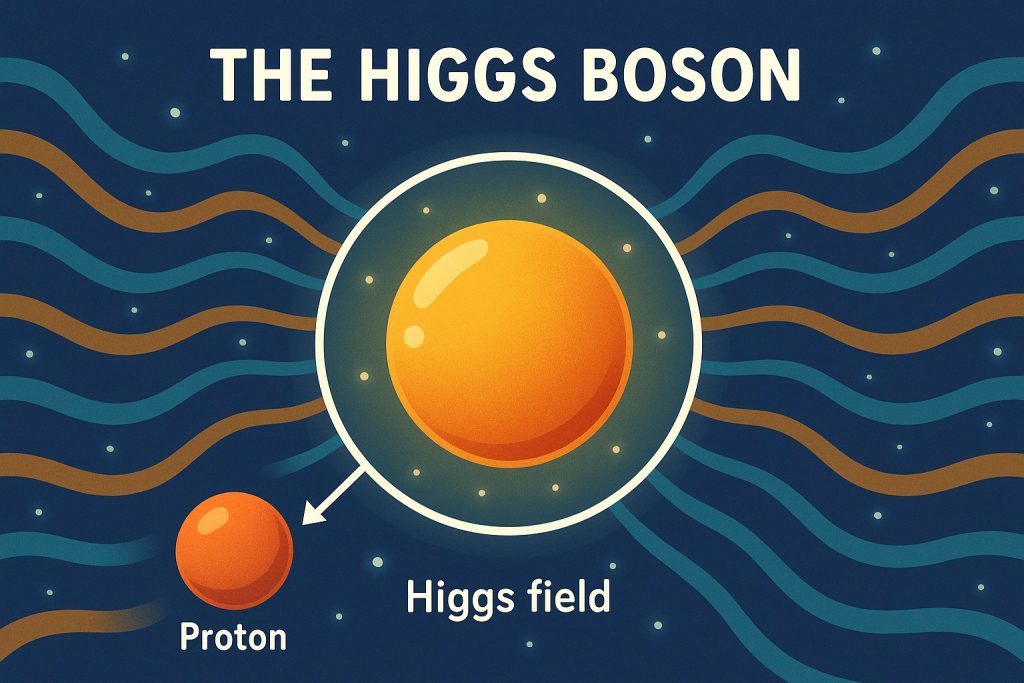The Higgs boson is a fundamental particle that plays a crucial role in explaining why other elementary particles have mass. Predicted in 1964 by physicist Peter Higgs and others, the particle remained purely theoretical until its groundbreaking discovery in 2012 at the Large Hadron Collider (LHC) at CERN. The confirmation of the Higgs boson completed the Standard Model of particle physics — our most accurate theory describing the fundamental building blocks of matter.
What Is the Higgs Boson?
The Higgs boson is associated with the Higgs field, an invisible energy field that permeates all of space. As particles move through this field, some interact more strongly than others, gaining mass as a result — much like moving through a thick liquid.
The boson itself is the quantum excitation or ripple in this field — similar to how a photon is a ripple in the electromagnetic field. Without the Higgs field and its boson, fundamental particles like W and Z bosons, quarks, and electrons would be massless, making the formation of atoms, stars, and life impossible.
How It Was Discovered
After decades of theoretical work, the Higgs boson was finally discovered by:
- Colliding high-energy protons in the LHC to simulate extreme conditions;
- Analyzing trillions of collisions using massive detectors (ATLAS and CMS);
- Observing specific decay patterns consistent with a new particle around 125 GeV.
On July 4, 2012, CERN announced the discovery of a particle “consistent with the Higgs boson,” a landmark moment in science. The Nobel Prize in Physics was awarded in 2013 to Peter Higgs and François Englert for the theoretical prediction.
Why the Higgs Boson Matters
The discovery of the Higgs boson confirmed that the Higgs mechanism is real, helping explain:
- Why some particles have mass and others (like photons) do not;
- How the weak nuclear force is distinct from electromagnetism;
- The deeper structure of symmetry breaking in nature.
This finding solidified the Standard Model, but also opened up many new questions — such as why the Higgs field has the strength it does, and whether there are more Higgs-like particles or fields yet to be discovered.
Ongoing Research and Mysteries
Physicists are now investigating:
- Whether the Higgs is fundamental or composite;
- How it may connect to dark matter or supersymmetry;
- If multiple Higgs bosons exist (as predicted in some theories);
- The exact shape of the Higgs potential, which might explain cosmic inflation.
Understanding the Higgs boson may ultimately reveal how the universe evolved and what lies beyond our current theories.
Glossary
- Higgs field: A field that gives particles mass through interaction.
- Boson: A force-carrying particle; the Higgs boson mediates the Higgs field.
- Standard Model: The current theory describing all known elementary particles and forces (except gravity).
- Symmetry breaking: A process where forces or particles become distinct as the universe cools.
- GeV (giga-electronvolt): A unit of energy used to describe particle masses.


